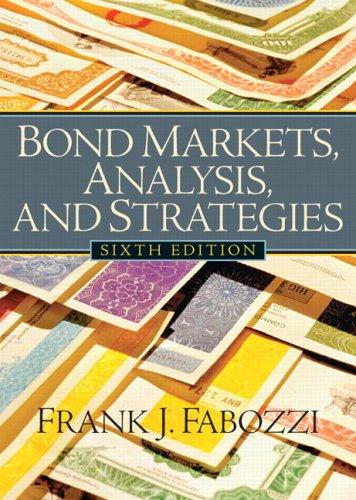
MONTHLY Expected Returns, Standard Deviations, and Correlations July 1990 through December 2014, 294 months, returns are total stock market returns for the region) Correlation with: Asset Class Expected Std. Deviation US J apan Asia (non-Japan) Europe Return US 0.89% 4.34% 1.00 0.41 0.71 0.79 Japan 0.21% 5.97% 0.41 1.00 0.47 0.50 Asia (non-Japan) 0.96% 6.01% 0.71 0.47 1.00 0.75 Europe 0.74% 5.04% 0.79 0.50 0.75 1.00 For the three questions below, assume a risk-free rate of 0.24% per month 4. Suppose you are currently invested 100% in U.S. stocks and you CANNOT short: a. Find the portfolio that maximizes expected return if you want the same risk of U.S. stocks, b. What is the expected return of this portfolio and what are the portfolio weights? 5. Suppose you CANNOT short: a. What is the expected return and standard deviation of the tangency portfolio? What are the portfolio weights? b. Does JAPAN have any part in the tangency portfolio? If yes, why is JAPAN a useful part of the portfolio? If not, why is JAPAN not part of it? 6. Suppose you CANNOT short: a. Now assume that the expected return for Japanese stocks is 0.96% per month (the same as Asia Pacific). What is the expected return and standard deviation of the tangency portfolio? What are the weights? Attach File Browse My Computer Browse Content Collection MONTHLY Expected Returns, Standard Deviations, and Correlations July 1990 through December 2014, 294 months, returns are total stock market returns for the region) Correlation with: Asset Class Expected Std. Deviation US J apan Asia (non-Japan) Europe Return US 0.89% 4.34% 1.00 0.41 0.71 0.79 Japan 0.21% 5.97% 0.41 1.00 0.47 0.50 Asia (non-Japan) 0.96% 6.01% 0.71 0.47 1.00 0.75 Europe 0.74% 5.04% 0.79 0.50 0.75 1.00 For the three questions below, assume a risk-free rate of 0.24% per month 4. Suppose you are currently invested 100% in U.S. stocks and you CANNOT short: a. Find the portfolio that maximizes expected return if you want the same risk of U.S. stocks, b. What is the expected return of this portfolio and what are the portfolio weights? 5. Suppose you CANNOT short: a. What is the expected return and standard deviation of the tangency portfolio? What are the portfolio weights? b. Does JAPAN have any part in the tangency portfolio? If yes, why is JAPAN a useful part of the portfolio? If not, why is JAPAN not part of it? 6. Suppose you CANNOT short: a. Now assume that the expected return for Japanese stocks is 0.96% per month (the same as Asia Pacific). What is the expected return and standard deviation of the tangency portfolio? What are the weights? Attach File Browse My Computer Browse Content Collection







